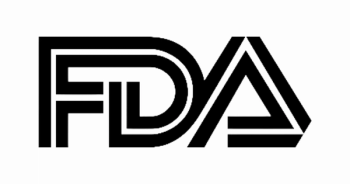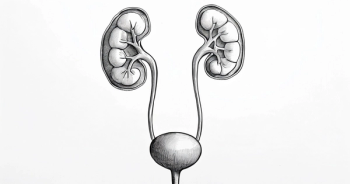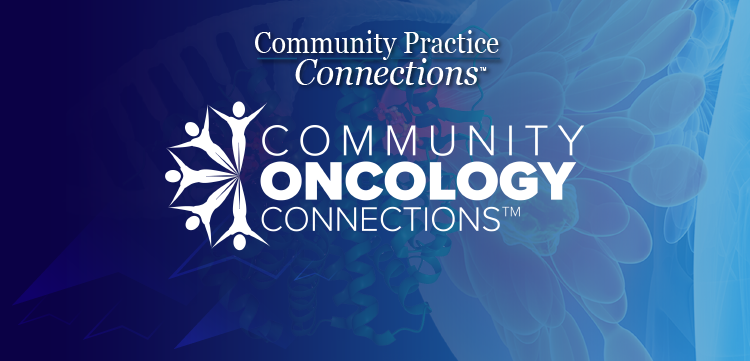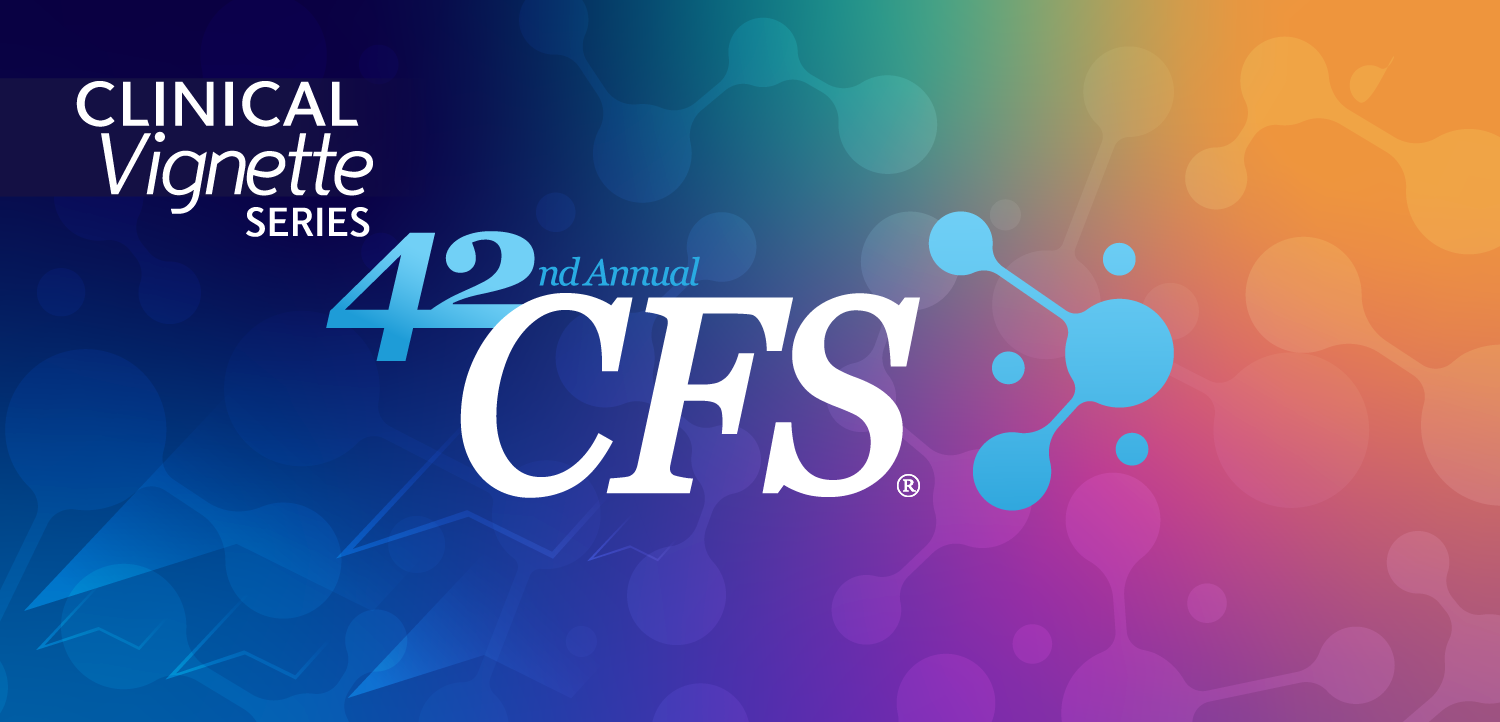
Targeted Therapies in Oncology
- July 1 2021
- Volume 10
- Issue 9
Novel Approaches Address Tumor Heterogeneity in GI Malignancies
The heterogeneity of tumors in gastrointestinal cancers continues to pose a challenge, according to Wells Messersmith, MD.
The emergence of novel approaches, such as antibody-drug conjugates (ADCs), KRAS G12C inhibitors, and novel combinations such as tyrosine kinase inhibitor (TKI)/immune checkpoint inhibitors, exhibits promising outcomes in gastrointestinal (GI) cancers, according to Wells Messersmith, MD.
Several new ADCs have shown promising activity in small subgroups of patients, although disappointing results have been reported thus far with regard to their use in patients with RAS-mutant disease, outside of the KRAS G12C–mutated subgroup, said Messersmith, a professor of medicine and medical oncology at the University of Colorado Cancer Center. However, at least 3 studies are underway to evaluate approaches in patients with other RAS mutations.
The heterogeneity of tumors in GI cancers continues to pose a challenge, added Messersmith. As such, understanding how circulating tumor DNA will play into the treatment of patients as RAS inhibitors emerge in the clinic will be an area of interest going forward.
“There are some interesting signals with checkpoint inhibitors and TKIs but we just do not know who is going to respond,” Messersmith said during a presentation at the 6th Annual School of Gastrointestinal Oncology®, hosted by Physicians’ Education Resource® (PER®). “Most of these [efforts] have at least a biomarker hypothesis and how we fi nd these rare subsets is going to be a challenge for the fi eld.”
Antibody-Drug Conjugates
ADCs were first proposed as far back as the 1980s, but it took until the early 2000s for the first one to be approved for use, noted Messersmith. In 2013, adotrastuzumab emtansine (T-DM1, Kadcyla) was approved for use in patients with HER2-positive breast cancer. Since then, many of the ADCs to receive regulatory approval have emerged in the breast cancer paradigm, up until recently, he said.
The ADCs approved for use in the treatment of patients with solid tumors include trastuzumab emtansine and fam-trastuzumab deruxtecan-nxki (Enhertu) for HER2-positive breast cancer and HER2-positive gastric cancer,enfortumab vedotin-ejfv (Padcev) for locally advanced and metastatic urothelial carcinoma, and sacituzumab govitecan-hziy (Trodelvy) for triplenegative breast cancer.2
“Several steps have to happen [with] ADCs; they need to bind to an antigen, it has to get internalized, and then through endosomal and lysosomal biology, which is as of yet not all that understood in terms of the predictors of efficacy, you release the payload,” Messersmith said. “That’s where the magic bullet part of this comes in, where it is really only supposed to release the payload at sites of tumor. Then the payload does its thing in terms of killing tumor cells. For each of these steps, you can see where you’d get mechanisms of resistance.”3
ADCs are made up of an antigen, which is the target of the antibody, along with a cytotoxic payload. The most important advance in the past decade, however, has been in terms of linkers, according to Messersmith. Having a linker that is strong enough to hold the payload in circulation is critical, but it also must release the cytotoxic payload to the tumor site. “It took many, many years to get the right linkers in place to actually accomplish these goals,” he said.
In the phase 2 MATCH trial (NCT02465060), which examined T-DM1 in patients with HER2-amplified tumors, the rate of HER2 amplification was found to be low in patients with GI cancers; however, those numbers added up, Messersmith noted. Moreover, in those patients with GI cancers, T-DM1 elicited some responses, although the duration of benefit proved to be brief.4
In January 2021, the FDA approved trastuzumab deruxtecan for the treatment of adult patients with locally advanced or metastatic HER2positive gastric or gastroesophageal junction (GEJ) adenocarcinoma who have received a previous trastuzumab (Herceptin)-based regimen. This ADC consists of an anti-HER2 antibody with a cleavable tetrapeptide-based linker, and a cytotoxic topoisomerase I inhibitor.5
“That has actually been a more common payload [to emerge] over the past several years,” Messersmith said.
The regulatory decision was based on data from the phase 2 DESTINY-Gastric01 trial (NCT03329690), which included patients with HER2-expressing advanced gastric or GEJ adenocarcinoma who had received at least 2 prior treatments, including fluoropyrimidine and a platinum agent. Eighty-six percent of patients had received prior treatment with taxanes, and 33% had prior treatment with checkpoint inhibitors.
Investigators randomized a total of 187 participants 2:1 to receive either trastuzumab deruxtecan at a dose of 6.4 mg/kg in a 3-week cycle (n = 125), or physician’s choice of either irinotecan or paclitaxel (n = 62). The primary end point of the study was overall response rate (ORR), and secondary end points included overall survival (OS), duration of response (DOR), progression-free survival (PFS), confirmed ORR, and safety.
The results showed an ORR of 51.3% (95% CI, 41.9%-60.5%; P < .0001) for trastuzumab deruxtecan (TABLE). “In the third-line setting, to have a response rate that high is actually pretty impressive,” Messersmith noted. “You can see that 10 patients had a complete response, whereas 41 patients had a partial response, and the disease control rate was 85.7%. [The agent] was quite active, so you could see why the FDA would approve it, despite the fairly limited patient numbers.”
Additionally, the median OS with the ADC was 12.5 months (95% CI, 9.6-14.3) vs 8.4 months (95% CI, 6.9-10.7) with physician’s choice (HR, 0.59; 95% CI, 0.39-0.88; P = .0097). The median PFS in the investigative and control arms was 5.6 months (95% CI, 4.3-6.9) vs 3.5 months (95% CI, 2.0-4.3), respectively (HR, 0.47; 95% CI, 0.31-0.71).
“[These survival rates] go down gradually; they are not leveling like they do with immunotherapy,” noted Messersmith. “However, [these are still] fairly impressive results when you compare them with [those of] trifluridine and tipiracil [TAS-102, Lonsurf], regorafenib [Stivarga], or some of these other drugs that we use in the third-line setting for other GI cancers.”
In the phase 2 DESTINY-CRC01 trial (NCT03384940), investigators examined trastuzumab deruxtecan in patients with unresectable and/or metastatic, HER2-expressing colorectal cancer (CRC). The primary end point for this trial was ORR by independent central review in cohort A. Notably, previous HER2targeted treatment was permitted.
Results showed an ORR of 45.3% (95% CI, 31.6%59.6%), and tumor shrinkage over time was well sustained, said Messersmith. The median PFS was 6.9 months (95% CI, 4.1-not evaluable) and the median OS was not reached.6 “These data are immature but are still impressive for the third-line setting and beyond,” he noted.
A majority of the treatment-emergent adverse events (TEAEs) reported in this study were grade 1 or 2, and many of them were GI-related toxicities. The most common TEAEs included nausea, anemia, and decreased neutrophil count.
“It’s not surprising given that you have an irinotecan-type of drug,” Messersmith said. “It shows that some of the payload is clearly getting into the circulation…. The idea is that there is a much higher amount of drug being delivered to the tumor site.”
Additionally, 5 incidents of interstitial lung disease were observed during this study, 2 of which were grade 5. The median time to investigator-reported onset of these incidents was 80 days (range, 22-132), and all 5 patients were treated with corticosteroids. Two of the patients with interstitial lung disease recovered, 1 did not recover and later died from disease progression, and 2 died as a result of the interstitial lung disease.
In the 2 patients who died, the onset of interstitial lung disease ranged from 40 to 126 days; both received steroids as treatment and death occurred 6 to 18 days after diagnosis. As a result, new protocol recommendations encourage monitoring for symptoms, and holding ADC treatment and starting steroids immediately if interstitial lung disease is suspected.
“[Trastuzumab deruxtecan showed] promising and durable activity. For a third-line response rate to be around 45% is impressive,” Messersmith said. “[Also, we saw] a median PFS of around 7 months and we’re used to seeing a median PFS of less than 2 months in this population. This [agent] could be an option down the line as further data come out.”
Other HER2-targeted ADCs in development include A166, XMT-1522, MEDI-4276, ARX788, RC48-ADC, BAT8001, and PF-06804103.
“Nowadays, [these ADCs] are able to dial in the exact number of warheads per antibody, and as you do that, you seem to get a much better efficacy to toxicity ratio,” Messersmith said.
Trop2 Targeting
However, overexpression does not always equate to benefit with ADCs in GI cancers. For example, there have been many challenges with Trop2 targeting. Trop2 is a glycoprotein that was initially identified as a surface marker of trophoblast cells and has subsequently been found to be overexpressed in many solid tumors, including most GI cancers.7
Sacituzumab govitecan was examined in patients with GI cancers and only yielded 1 response; as such, the agent is not moving forward, noted Messersmith. Another agent, PF-06664178, also failed to elicit responses in this patient population, and its further development for this purpose was stopped.
RAS Pathway Signaling and Inhibition KRAS signaling can lead to multiple cellular-proliferation pathways, and this complexity and redundancy has made pathway targeting very complicated, according to Messersmith. Thus, many unsuccessful strategies have been reported over the past 15 years.8
It is a very redundant and complex pathway to try to inhibit,” Messersmith said. “There was this idea that maybe we could just inhibit downstream effector signals, such as a MEK inhibitor…, but now we have more modern agents."
One of those agents is adagrasib (MRTX849), a covalent inhibitor of KRAS G12C that irreversibly and selectively binds KRAS G12C in its inactive, GDP-bound state. The agent was optimized for desired properties of KRAS G12C inhibition, has high selectivity for the mutant KRAS G12C proteins vs wild-type KRAS, and has favorable pharmacokinetic properties; these include oral bioavailability, a long halflife, and extensive tissue distribution.
Investigators examined adagrasib as part of the phase 1 KRYSTAL-1 trial (NCT03785249). Previously reported data showed that adagrasib had clinical activity in patients with pretreated KRAS G12C–mutant CRC. For the trial, patients were treated on a standard-dose escalation, where they received up to 600 mg/kg of the agent twice daily. The median follow-up for patients with CRC was 4.3 months. The confi rmed ORR with the agent in patients with CRC was 17% (n = 3/18), and the disease control rate was 94% (n = 17/18). Patients tolerated the agent fairly well, with AEs that included nausea, diarrhea, and vomiting. These data are still very early; however, all patients enrolled to the study were still receiving treatment as of the August 2020 data cutoff.10
The randomized, open-label, phase 3 KRYSTAL-10 trial (NCT04793958) will compare second-line adagrasib in combination with cetuximab (Erbitux) with chemotherapy in patients with metastatic, KRAS G12C–mutant CRC. The primary outcome measures for this study are PFS and OS, and secondary outcome measures include safety, ORR per RECIST 1.1 criteria, DOR, and patient-reported outcomes. To be eligible for enrollment, patients must have confirmed metastatic CRC and confirmed KRAS G12C mutation and have progressed on a first-line fluoropyrimidine-, oxaliplatin-, or irinotecan-based regimen.
TKI and Immune Checkpoint Inhibitor Combinations
Combination regimens comprised of TKIs and immune checkpoint inhibitors have represented an interesting area of research in the GI cancer treatment paradigm, according to Messersmith.
Initially, promising results were reported from a phase 1 trial (NCT01988896) examining the combination of atezolizumab (Tecentriq) and cobimetinib (Cotellic) in patients with solid tumors, including those with metastatic CRC.11
However, data from the phase 3 COTEZO IMblaze370 trial (NCT02788279), which looked at atezolizumab with or without cobimetinib vs regorafenib, showed that the response rate achieved with the combination had dropped.12
The phase 2 LEAP-005 trial (NCT03797326) examined the combination of lenvatinib (Lenvima) plus pembrolizumab (Keytruda) in 30 patients with previously treated advanced solid tumors. Primary end points for this study were ORR and safety. The GI cohorts in the trial included patients with third-line gastric cancer, third-line CRC, and second-line biliary tract cancer.13
Patients in the CRC cohort experienced an ORR of 21.9% (95% CI, 9.3-40.0) with the combination, whereas those in both the gastric cancer cohort and the biliary tract cancer cohort had an ORR of 9.7% (95% CI, 2.0-25.8).
“I have seen these patients in the clinic, and we have had multiple of these studies and investigator-initiated studies opened, and you definitely have patients who get these incredible responses,” Messersmith said.
“Unfortunately, however, it is not the majority, so trying to figure out which of these patients is going to benefit [from this approach] is a key challenge.”
The median PFS was 2.5 months (range, 1.8-4.2) in the gastric cancer cohort, 2.3 months (range, 2.0-5.2) in the CRC cohort, and 6.1 months (range, 2.1-6.4) in the biliary tract cancer cohort. “Two-thirds of the [patients with third-line CRC] are progressing at the 3-month interval, but if you make it out to 3 or 4 months, your chance of making it out to 9 months is actually pretty good,” Messersmith noted.
One of the challenges in the fi eld is to determine how to preclinically evaluate novel combinations, but different models are under exploration, Messersmith concluded.
References:
1. Messersmith W. Novel agents for GI cancers. Presented at: 6th Annual School of Gastrointestinal Oncology®; March 20, 2021; Virtual. Accessed March 23, 2021. https://bit.ly/3zBuKNM
2. Criscitiello C, Morganti S, Curigliano G. Antibody–drug conjugates in solid tumors: a look into novel targets. J Hematol Oncol. 2021;14(1):20. doi:10.1186/s13045-021-01035-z
3. Chau CH, Steeg PS, Figg WD. Antibody-drug conjugates for cancer. Lancet. 2019;394(10200):793-804. doi:10.1016/S0140-6736(19)31774-X
4. Jhaveri KL, Wang XV, Makker V, et al. Ado-trastuzumab emtansine (TDM1) in patients with HER2-amplifi ed tumors excluding breast and gastric/gastroesophageal junction (GEJ) adenocarcinomas: results from the NCI-MATCH trial (EAY131) subprotocol Q. Ann Oncol. 2019:30(11):18211830. doi:10.1093/annonc/mdz291
5. Shitara K, Bang YJ, Iwasa S, et al. Trastuzumab deruxtecan (T-DXd; DS-8201) in patients with HER2-positive advanced gastric or gastroesophageal junction (GEJ) adenocarcinoma: a randomized, phase II, multicenter, open-label study (DESTINY-Gastric01). J Clin Oncol. 2020;38(suppl 15):4513. doi:10.1200/JCO.2020.38.15_suppl.4513
6. Siena S, Di Bartolomeo M, Raghav KPS, et al. A phase II, multicenter, open-label study of trastuzumab deruxtecan (T-DXd; DS-8201) in patients (pts) with HER2-expressing metastatic colorectal cancer (mCRC): DESTINY-CRC01. J Clin Oncol. 2020;38(suppl 15):4000. doi:10.1200/ JCO.2020.38.15_suppl.4000
7. Goldenberg DM, Stein R, Sharkey RM, et al. The emergence of trophoblast cell-surface antigen 2 (TROP-2) as a novel cancer target. Oncotarget. 2018;9(48):28989-29006. doi:10.18632/oncotarget.25615
8. Friedlaender A, Drilon A, Weiss GJ, Banna GL, Addeo A. KRAS as a druggable target in NSCLC: rising like a phoenix after decades of development failures. Cancer Treat Rev. 2020;85:101978. doi:10.1016/j.ctrv.2020.101978
9. Hallin J, Engstrom LD, Hargis L, et al. The KRASG12C inhibitor MRTX849 provides insight toward therapeutic susceptibility of KRAS-mutant cancers in mouse models and patients. Cancer Disov. 2020;10(1):54-71. doi:10.1158/2159-8290.CD-19-1167
10. Johnson ML, Ou SHI, Barve M, et al. KRYSTAL-1: activity and safety of adagrasib (MRTX849) in patients with colorectal cancer (CRC) and other solid tumors harboring a KRAS G12C mutation. Eur J Cancer. 2020;138(suppl 2):S2. doi:10.1016/S0959-8049(20)31077-7
11. Hellman MD, Kim TW, Lee CB, et al. Phase Ib study of atezolizumab combined with cobimetinib in patients with solid tumors. Ann Oncol. 2019;30(7):1134-1142. doi:10.1093/annonc/mdz113
12. Eng C, Kim TW, Bendell J, et al; IMblaze370 Investigators. Atezolizumab with or without cobimetinib versus regorafenib in previously treated metastatic colorectal cancer (IMblaze370): a multicentre, open-label, phase 3, randomised, controlled trial. Lancet Oncol. 2019;20(6):849-861. doi:10.1016/S1470-2045(19)30027-0
13. Lwin Z, Gomez-Roca C, Saada-Bouzid E, et al. LBA41 LEAP-005: phase II study of lenvatinib (len) plus pembrolizumab (pembro) in patients (pts) with previously treated advanced solid tumours. Ann Oncol. 2020;31(suppl 4):S1170. doi:10.1016/annonc/annonc325
Articles in this issue
over 4 years ago
Integrating Remote Symptom Management With ePROs in Cancer Careover 4 years ago
Molecular Profiling Is the Future of Biliary Tract Treatment







































